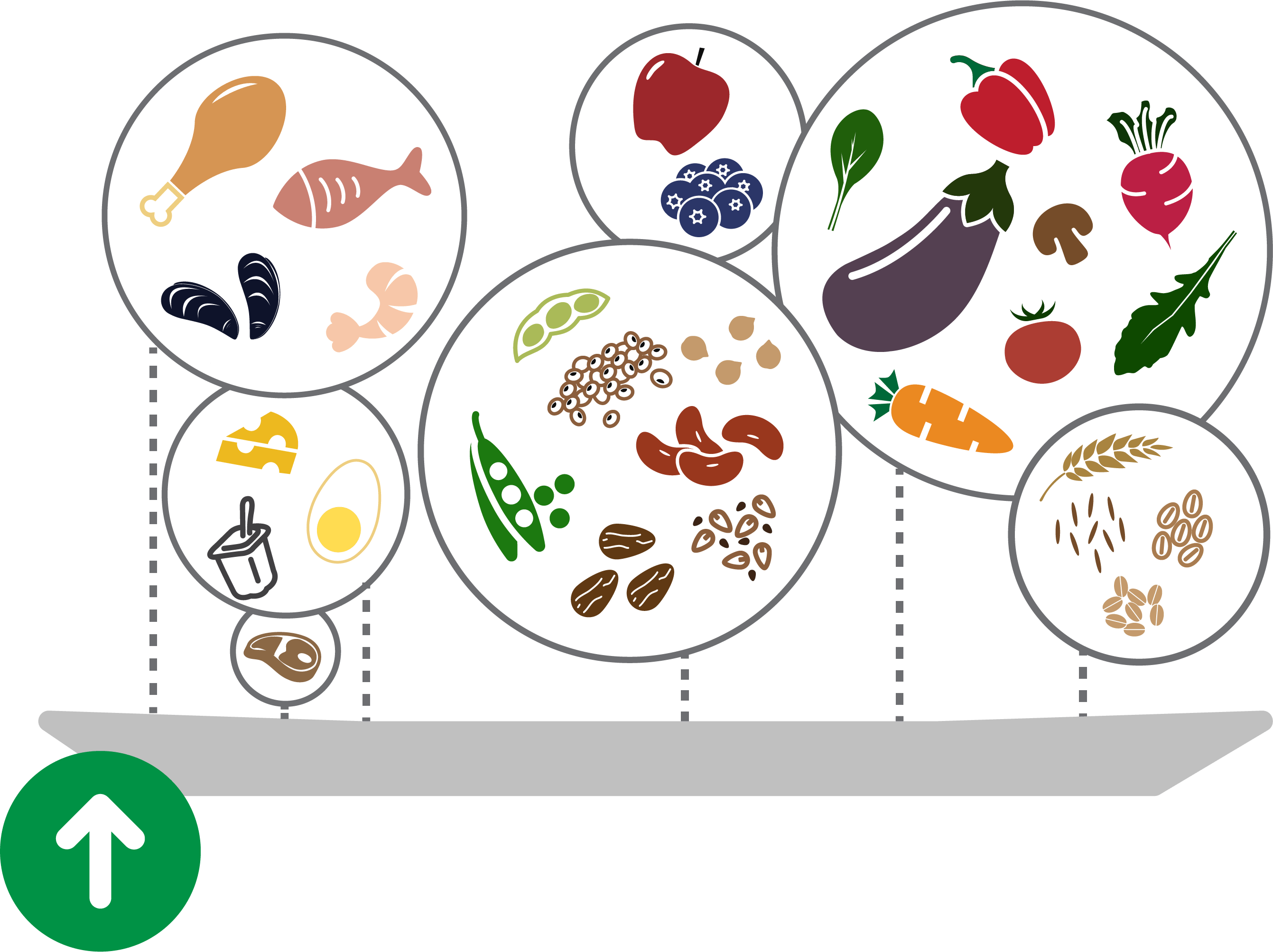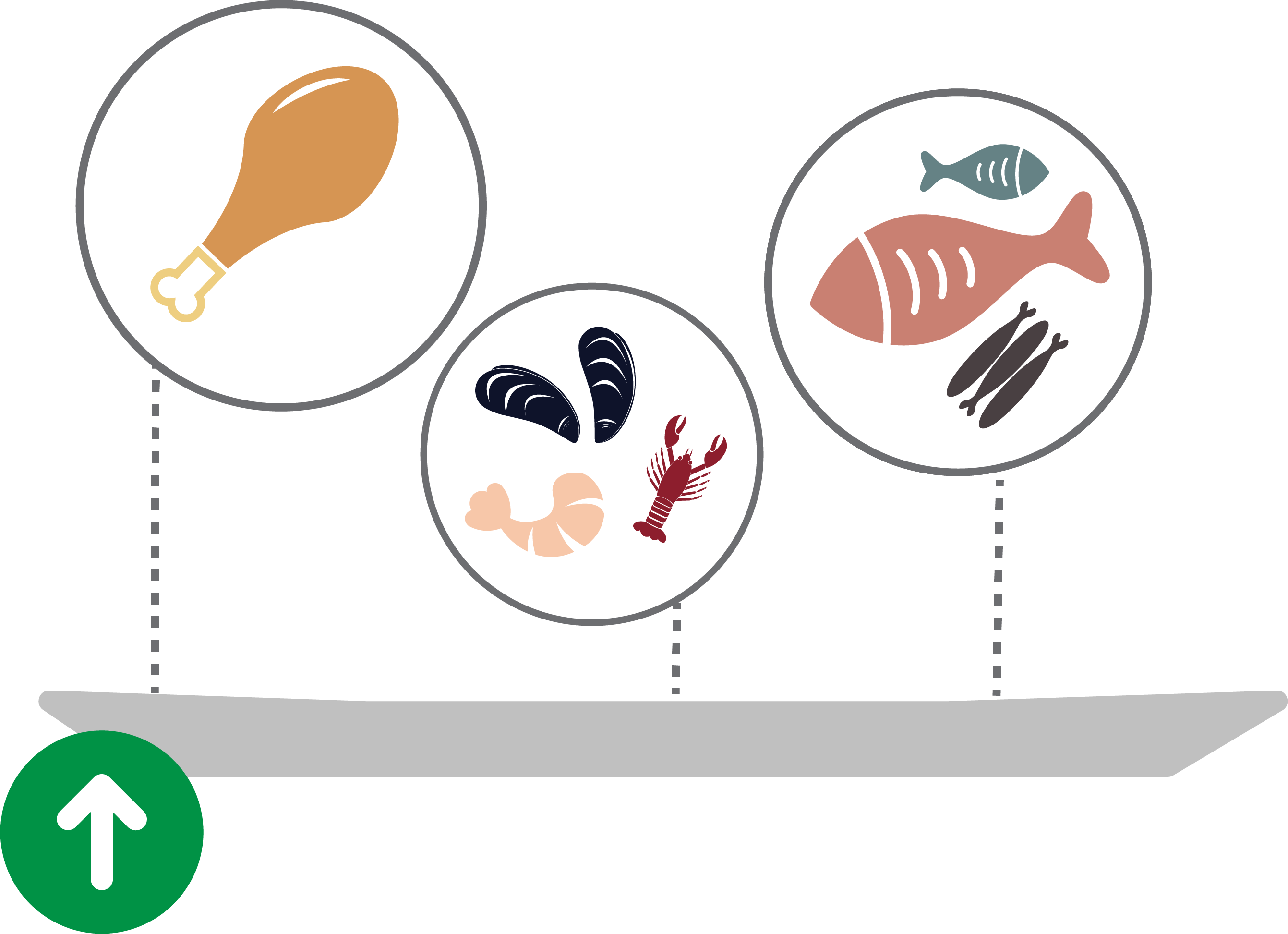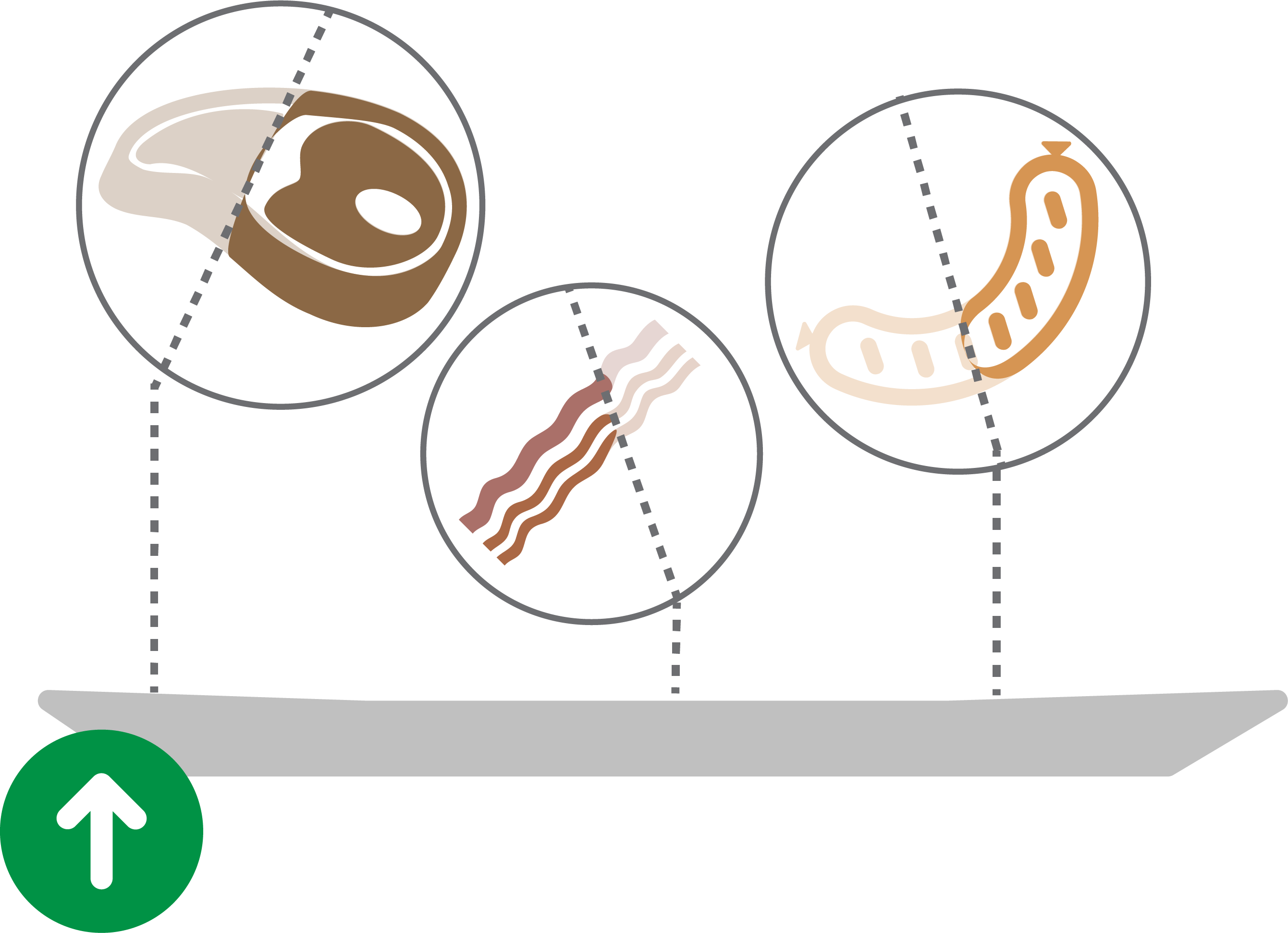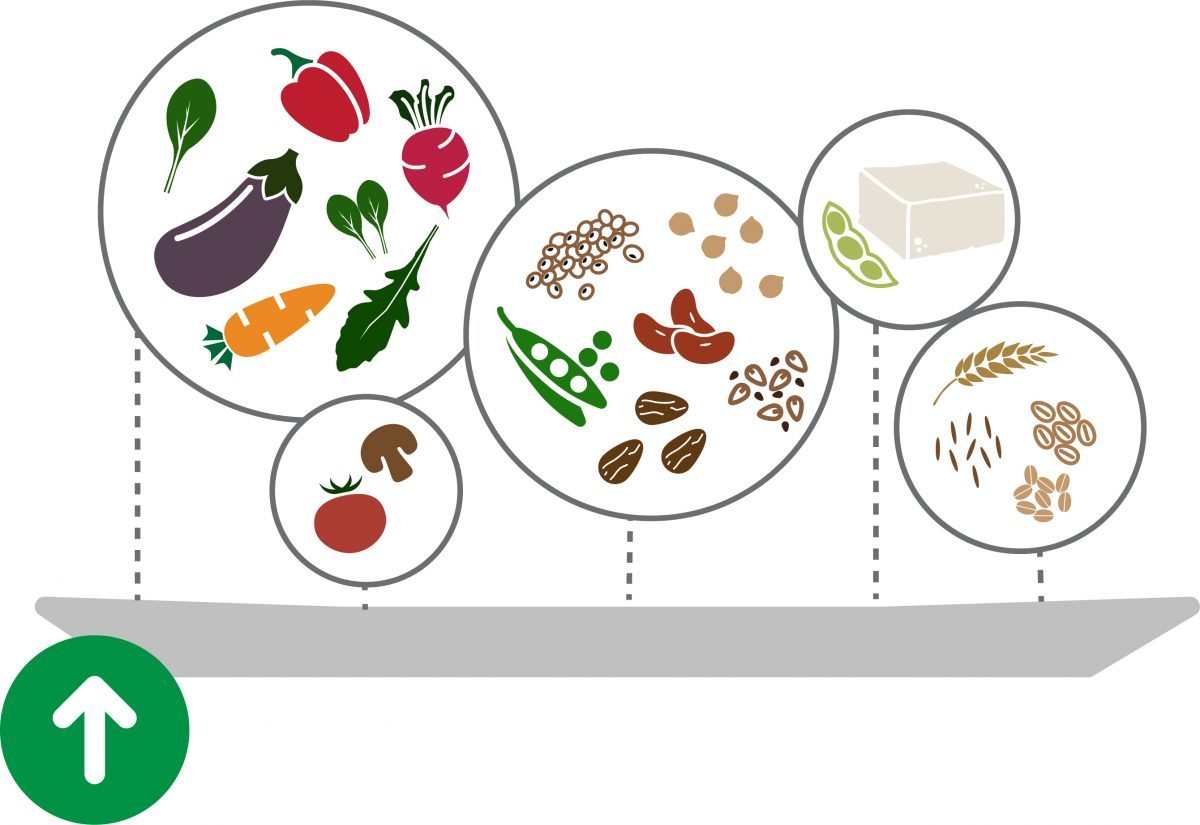You might think a plate devoid of meat is incomplete—questioning whether it will fill you up, be too expensive, give you enough protein, be lacking in flavor or texture, etc. If that’s been your experience, don’t be discouraged. While this approach doesn’t incorporate any animal products, it doesn’t mean you have to remove them from your diet completely. Rather, it shares some simple strategies for creating filling, delicious, and even budget-friendly plant-based preparations.
Start here:
- Incorporate umami: alongside sweet, salty, sour, and bitter, umami is the fifth well-recognized taste, which is typically described as a “savory, meaty taste.” True to its description, umami foods often include red meats and poultry, eggs and certain cheeses, and a wide range of seafood. However, there are a number of umami-packed plant-based foods that can provide this savory, meaty, rich taste when you’re cooking without animal foods. For example, fermented products like soy sauce and miso; sea vegetables; green tea; toasted nuts and seeds; savory spices like cumin and smoked paprika; and a range of vegetables, including tomatoes, asparagus, winter squash, sweet potatoes, and carrots.
- Roasting, grilling, sautéing and caramelizing vegetables increases the umami as well, as this process breaks down the protein to release the flavor.
- Mushrooms also stand out for their umami-rich flavor, which, combined with their “meaty” texture can make a great replacement for beef.
- Build texture, protein, and satiety with legumes and nuts: Legumes (like beans, soybeans, peas, lentils), nuts (like almonds, walnuts, and pecans), and seeds (chia, hempseed) can stand in for animal-based protein foods, while providing an array of other nutrients. Same goes for products made from them, such as nut butters and soy foods (like tofu or tempeh) or other plant-based products, like veggie burgers (note that with any highly processed product, plant-based or not, it’s important to look out for extra sodium, saturated fat from tropical oils, or other additives).
- Legumes are worth calling out in particular, for human health and planetary health. For example, just one cup of cooked lentils provides 18 grams of protein and 15 grams of fiber, and it has virtually no saturated fat (for comparison, 4 ounces of ground beef provides 14 grams of protein, no fiber, and 11 grams of saturated fat). And beyond their lower impact on greenhouse gas emissions, legumes are also known for helping replace nitrogen in the soil.
- Texturally, lentils even resemble ground beef when cooked, and when paired with umami-packed vegetables, like mushrooms, can even mimic the taste. Try them anywhere you’d used crumbled cooked ground beef. For example:

- For building the rest of the dish, incorporate minimally processed whole grains, which will boost texture and also provide some protein. Cook your whole grains in low-sodium vegetable broth for even more flavor.
What else can I do?
As you can see (and try for yourself, following these tips!), plant-based meals can indeed be filling and flavorful on their own. However, if you happen to have leftover chicken or feel like having an egg or some cheese, these tips can help provide a solid base for incorporating animal-based foods into your meals. For some ideas and recipes on how to do so, check out:

Consume less meat, enjoy more variety
See the tips.More plate upgrades:

Swap out red meat for healthier meats

Eat a little less red meat, any way you can
Terms of Use
The contents of this website are for educational purposes and are not intended to offer personal medical advice. You should seek the advice of your physician or other qualified health provider with any questions you may have regarding a medical condition. Never disregard professional medical advice or delay in seeking it because of something you have read on this website. The Nutrition Source does not recommend or endorse any products.
